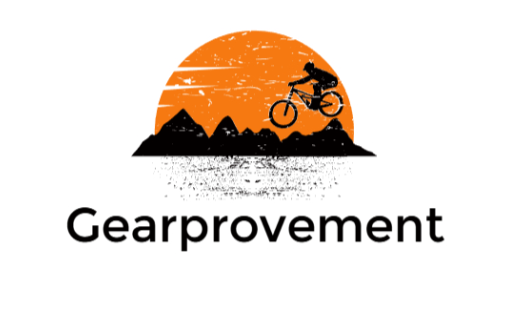Get ready to ride with confidence! Discover the essential factors for selecting the ultimate mountain bike helmet and gear up for your next adventure like a pro.

Choosing the right helmet isn't just about style; it's a critical decision that can mean the difference between a thrilling ride and a potential injury. In this guide, we'll take you through the intricate process of selecting the perfect mountain bike helmet.
From understanding the key features to assessing the fit and safety standards, we've got you covered, ensuring that you're not only well-protected but also fully equipped to enjoy every twist and turn the trail throws your way.
So, buckle up (your helmet, that is), as we embark on a journey to discover your ideal mountain biking headgear.
Safety Features
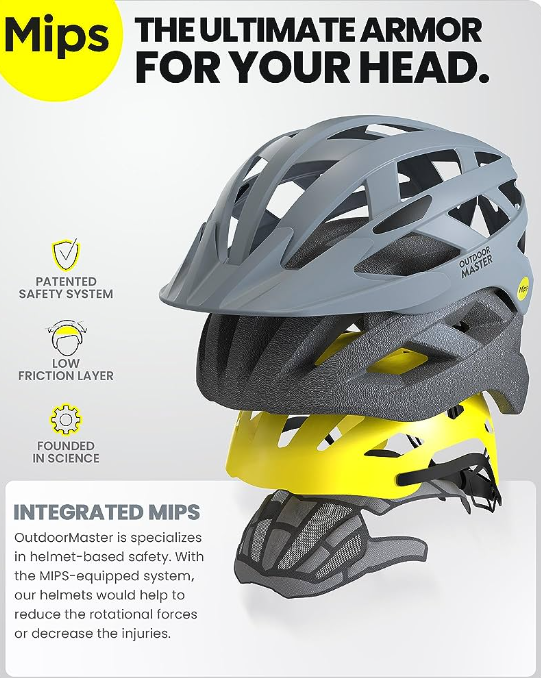
Safety is paramount when choosing a mountain bike helmet, and understanding the key safety features is essential to making an informed decision. Here's a closer look at the safety features you should consider:
Impact Protection: The primary purpose of a helmet is to protect your head in the event of a crash. Look for a helmet that has a sturdy outer shell made from materials like polycarbonate or fiberglass-reinforced plastic. This outer shell is designed to absorb and distribute impact forces, reducing the risk of head injury.
Inner Liner: Beneath the outer shell, you'll find the inner liner, typically made of expanded polystyrene (EPS) foam. EPS foam is designed to crush and absorb energy upon impact, thus protecting your head. Some helmets feature multi-density EPS foam, which can provide better protection by varying foam density in different areas of the helmet.
MIPS Technology: Some helmets come equipped with MIPS (Multi-directional Impact Protection System) technology. MIPS is a low-friction layer between the helmet's outer shell and inner liner that allows the helmet to slide slightly upon impact, reducing rotational forces transmitted to the brain. This can be particularly beneficial in certain types of impacts.
Full-Face vs. Half-Shell: The level of protection varies between full-face and half-shell helmets. Full-face helmets offer maximum protection for downhill and aggressive riding, covering not only the top but also the chin and face. Half-shell helmets provide adequate protection for trail and cross-country riding but leave the face exposed.
Certification Standards: Ensure the helmet meets recognized safety standards. In the United States, the Consumer Product Safety Commission (CPSC) sets the standard for bicycle helmets. In Europe, the CE EN1078 standard is widely recognized. Look for labels or certifications indicating compliance with these standards.
Extended Rear Coverage: Helmets with extended rear coverage offer additional protection to the back of your head. This can be valuable in case of falls where the rear of the head may be vulnerable.
Strap and Buckle Quality: A secure strap and buckle system is essential for keeping the helmet in place during a crash. Look for helmets with durable, easy-to-adjust straps and sturdy buckles.
Ventilation and Heat Management: While not directly related to impact protection, good ventilation can help prevent overheating and discomfort, which, in turn, can affect your focus and safety while riding.
Weight: While not a safety feature per se, a lighter helmet can be more comfortable, especially on longer rides. However, it's important to strike a balance between weight and safety, as lighter helmets may sacrifice some protective features.
Crash Replacement Policies: Some helmet manufacturers offer crash replacement policies. These policies provide a discounted or free replacement helmet if your current helmet is involved in a crash, encouraging you to replace a damaged helmet promptly.
Remember that safety should always be your top priority when choosing a mountain bike helmet. Invest in a helmet that provides the highest level of protection within your budget and is suitable for your riding style. Ultimately, a quality helmet can make a significant difference in safeguarding your head and minimizing the risk of injury while enjoying your mountain biking adventures.
Recommended: The Best Mountain Bike Helmets
Helmet Type

The type of mountain bike helmet you choose should align with your riding style and the specific terrain you'll be tackling. Here's an in-depth exploration of the two primary types of mountain bike helmets: half-shell and full-face.
1. Half-Shell Helmets:
Half-shell helmets, also known as trail helmets or XC (cross-country) helmets, are the most common choice for riders who prioritize comfort, ventilation, and versatility. They are designed for less aggressive terrain but still provide essential protection. Here are some key features and considerations for half-shell helmets:
Coverage: Half-shell helmets cover the top and sides of your head, providing protection for impacts on these areas. However, they don't offer coverage for the face or chin.
Ventilation: These helmets are designed with ample ventilation, making them ideal for warm weather and extended rides. The ventilation helps keep you cool and comfortable during long climbs and challenging trails.
Weight: Half-shell helmets are typically lighter than full-face helmets, which makes them more suitable for all-day rides.
Comfort: The lightweight design and superior ventilation make half-shell helmets comfortable for long rides. They often feature adjustable retention systems and padding for a snug and secure fit.
Visibility: Half-shell helmets offer better visibility because they don't obstruct your peripheral vision. This can be an advantage on technical trails where quick reactions are crucial.
Riding Styles: Half-shell helmets are suitable for cross-country, trail, and light all-mountain riding. They are a popular choice for riders who want a balance of protection and comfort.
2. Full-Face Helmets:
Full-face helmets are designed for aggressive riding styles, including downhill, enduro, freeride, and BMX. They offer maximum protection, covering not only the top of your head but also your face, chin, and jaw. Here are the key features and considerations for full-face helmets:
Coverage: Full-face helmets provide comprehensive coverage, offering protection for the entire head, face, and jaw. This added protection is essential for high-speed descents and technical, rocky terrain.
Chin Bar: The distinctive feature of full-face helmets is the integrated chin bar. This bar protects your face and chin from direct impacts, making it crucial for extreme riding conditions.
Ventilation: While full-face helmets have ventilation, it is often less than that of half-shell helmets due to the chin bar. This can result in warmer conditions, which may be less comfortable on long climbs or in hot weather.
Weight: Full-face helmets are generally heavier than half-shell helmets due to the additional protective elements. However, modern designs aim to reduce weight while maintaining safety.
Downhill and Freeride: Full-face helmets are a must for downhill, freeride, and BMX riders who encounter high-speed descents and challenging obstacles. They offer the ultimate protection in these demanding disciplines.
Full-Face vs. Convertible: Some full-face helmets come with removable chin bars, allowing you to switch between full-face and half-shell configurations. This provides added versatility for riders who want the option to switch depending on the trail.
In conclusion, your choice between a half-shell and a full-face helmet should depend on your riding style and the type of terrain you frequent. For general trail riding and cross-country adventures, a well-ventilated half-shell helmet is likely sufficient. However, if you're tackling more aggressive terrain, high-speed descents, or technical downhill sections, a full-face helmet offers the superior protection needed to keep you safe during these extreme rides.
Fit And Comfort
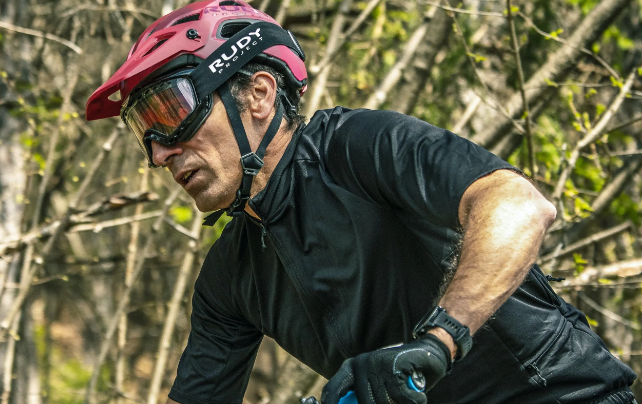
Fit and comfort are two of the most critical factors to consider when choosing a mountain bike helmet. A properly fitting helmet not only enhances safety but also ensures an enjoyable riding experience. Here's a detailed exploration of fit and comfort considerations:
1. Helmet Size and Shape:
Head Shape: Helmets come in various shapes to accommodate different head shapes. Common shapes include round, intermediate oval, and long oval. It's crucial to choose a helmet that matches your head shape for the best fit.
Sizing: Helmets are available in a range of sizes, typically indicated in centimeters or inches (e.g., 54-58cm or S/M/L). Measure your head's circumference to determine your size accurately. If you fall between sizes, opt for the larger size, and use padding adjustments to fine-tune the fit.
2. Adjustability:
Retention System: Most helmets have a retention system (often a dial or ratchet) at the back that allows you to adjust the helmet's fit to your head size. This system ensures a secure fit and prevents the helmet from shifting during your ride.
Straps: The chin straps should be adjustable to fine-tune the fit around your chin and ears. They should sit snugly but not uncomfortably tight. Buckles should be easy to use and stay securely fastened.
3. Padding and Liner:
Comfort Padding: Interior padding should be comfortable against your head. It should also be moisture-wicking to help manage sweat during hot rides. Some helmets offer removable and washable padding for easy maintenance.
Forehead Padding: Ensure there is sufficient padding at the forehead area to cushion against impacts and provide comfort.
4. Weight:
- Lightweight Design: Lighter helmets are generally more comfortable, especially during long rides. However, remember that safety should always be a priority, so choose a helmet that balances weight with protection.
5. Ventilation:
- Adequate Ventilation: Proper ventilation helps regulate your head's temperature and reduces discomfort from overheating. Look for helmets with well-placed vents that promote airflow without compromising safety.
6. Goggle Compatibility:
- Goggle Integration: If you wear goggles while riding, ensure that the helmet is compatible with them. Some full-face helmets have built-in goggle straps or special channels to keep your goggles secure.
7. Visor:
- Adjustable Visor: A visor can shield your eyes from the sun and help maintain visibility in varying light conditions. Make sure it's adjustable to accommodate different riding angles.
8. Test the Fit:
Try Before You Buy: Whenever possible, try on helmets in-store to assess the fit and comfort. Wear it for a few minutes to ensure there are no pressure points or discomfort.
Goggle Test: If you wear goggles, bring them with you when trying on a helmet to check for compatibility and comfort.
9. Break-In Period:
- Allow for Adjustment: Keep in mind that new helmets may require a break-in period as the padding and retention system adapt to your head shape. Be prepared to make small adjustments as needed.
10. Riding Conditions:
- Consider Your Climate: Your local climate can impact the type of helmet you choose. In hot and humid conditions, prioritize ventilation, while in cold weather, you might want additional insulation or options for wearing a beanie beneath the helmet.
Remember that a properly fitting helmet should sit level on your head, cover your forehead, and stay in place when you shake your head gently. It should be snug but not uncomfortably tight. Paying attention to fit and comfort details ensures that your mountain bike helmet will not only keep you safe but also enhance your riding experience by minimizing distractions and discomfort.
Recommended: The Best Mountain Bike Helmets
Ventilation
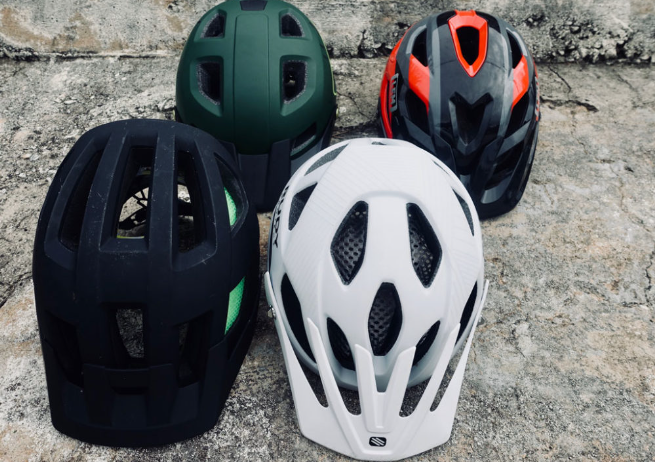
Ventilation is a crucial aspect of a mountain bike helmet that greatly influences your comfort and overall riding experience, especially during warm or hot weather. Here's an in-depth exploration of ventilation in bike helmets:
1. Importance of Ventilation:
Heat Regulation: When you're out on the trails, your body generates heat, and this heat needs to dissipate to keep you comfortable. Ventilation in a helmet allows heat to escape from your head, helping to regulate your body temperature and prevent overheating.
Sweat Management: Riding can be physically demanding, causing you to sweat. Proper helmet ventilation helps wick away moisture, reducing sweat buildup and discomfort. It can also help prevent sweat from dripping into your eyes, which can be distracting and potentially dangerous.
2. Ventilation Design:
Vents: Helmets feature a varying number of vents strategically placed around the shell. The size and placement of these vents impact the airflow through the helmet.
Internal Channels: Some helmets have internal channels or ducts that direct airflow over the head and through the helmet, enhancing cooling efficiency.
3. Types of Helmets and Ventilation:
Half-Shell Helmets: These helmets often have more vents compared to full-face helmets, as they are designed for less extreme riding and increased airflow is a priority.
Full-Face Helmets: While full-face helmets typically have fewer vents due to the added protection of the chin bar, modern designs aim to optimize airflow without compromising safety. Look for models with well-designed vent placements.
4. Considerations for Ventilation:
Climate: Consider the climate of the region where you'll be riding most often. In hot and humid areas, helmets with ample ventilation are a must to prevent overheating. In cooler climates, you might prioritize warmth and may not need as many vents.
Riding Style: Your riding style also influences ventilation needs. Cross-country riders who engage in long climbs and endurance rides often prefer well-ventilated helmets to stay cool. Downhill riders may prioritize other aspects, such as impact protection, over ventilation.
5. Ventilation vs. Safety:
- Balancing Act: While ventilation is essential for comfort, it's crucial to strike a balance between ventilation and safety. More vents may mean less protection, so opt for a helmet that meets safety standards while providing adequate ventilation.
6. Adjustable Ventilation:
- Some helmets come with adjustable vents: These allow you to open or close specific vents to regulate airflow according to your preferences and riding conditions.
7. Visors and Ventilation:
- Adjustable Visors: Helmets with adjustable visors can help control airflow by either directing it towards your face or allowing it to pass over your head, depending on your needs.
8. Personal Preference:
- Try Before You Buy: Personal comfort can vary, so it's essential to try on different helmets and assess their ventilation when choosing one. Some riders may prioritize maximum airflow, while others may prefer a balance between airflow and safety.
In summary, ventilation is a critical consideration when selecting a mountain bike helmet, as it directly impacts your comfort during rides, especially in warm or hot conditions. Choosing a helmet with the right balance of ventilation, safety features, and fit ensures you can enjoy your biking adventures without the discomfort of overheating.
Weight
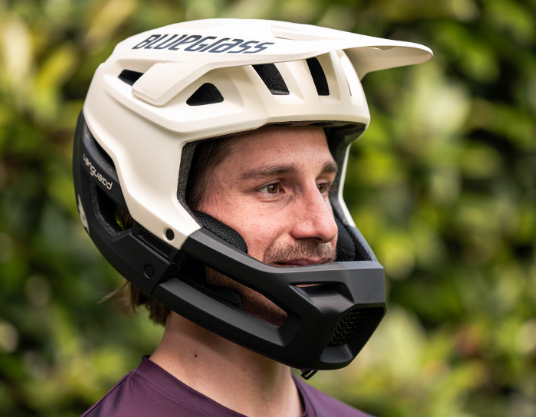
The weight of a mountain bike helmet is an important factor to consider, as it can significantly affect your comfort and overall riding experience. Here's a detailed exploration of why helmet weight matters and how it can impact your biking adventures:
1. Comfort and Fatigue:
Lighter Helmets: Lighter helmets are generally more comfortable for extended rides. The reduced weight minimizes strain on your neck and shoulders, making it easier to maintain proper riding posture and reducing fatigue during long cycling sessions.
Agility: A lighter helmet can also contribute to improved agility and maneuverability, especially in technical and challenging trail sections where quick movements are necessary.
2. Balance and Stability:
- Even Weight Distribution: A well-balanced, lightweight helmet sits more evenly on your head. This distribution of weight reduces the chances of the helmet shifting or tilting during your ride, ensuring a stable and secure fit.
3. Climbing Efficiency:
- Climbing Ease: When tackling uphill sections, every ounce matters. A lighter helmet won't weigh you down, allowing for more efficient climbing and less energy expenditure.
4. Impact on Safety:
Safety Standards: While weight reduction is desirable, it should never come at the expense of safety. All helmets, regardless of their weight, should meet established safety standards such as CPSC or CE EN1078 to provide adequate protection in the event of a crash.
Balancing Safety and Weight: Manufacturers aim to strike a balance between safety and weight by using materials and construction techniques that maintain safety standards while reducing overall helmet weight. Be cautious of helmets that are exceptionally lightweight, as they might compromise safety.
5. Aerodynamics:
- Aerodynamic Benefits: Some lightweight helmets are designed with aerodynamics in mind. These streamlined helmets can reduce air resistance, potentially enhancing your speed, especially during road or cross-country races.
6. Helmet Type and Weight:
Half-Shell Helmets: Half-shell helmets are typically lighter than full-face helmets due to their less complex construction and fewer protective elements.
Full-Face Helmets: Full-face helmets are generally heavier because of the added chin bar and additional protective features. However, advancements in materials have led to lighter full-face helmet options.
7. Personal Preference:
- Try Before You Buy: The perception of helmet weight can vary from person to person. Some riders may prefer the feeling of a lighter helmet, while others may not mind a slightly heavier one. Trying on helmets and assessing their comfort and weight is crucial before making a choice.
8. Price Consideration:
- Weight and Cost: It's worth noting that lightweight helmets, especially those with advanced materials, can be more expensive. Consider your budget and whether the reduced weight is worth the additional cost for your riding style and preferences.
In conclusion, the weight of your mountain bike helmet is an essential factor to consider when making a purchase. While a lighter helmet can offer increased comfort, agility, and climbing efficiency, it's essential to strike a balance between weight and safety. Ensure that the helmet you choose meets your safety requirements and provides the level of protection you need for your riding style while still offering the comfort and weight that enhance your overall biking experience.
Recommended: The Best Mountain Bike Helmets
Retention System
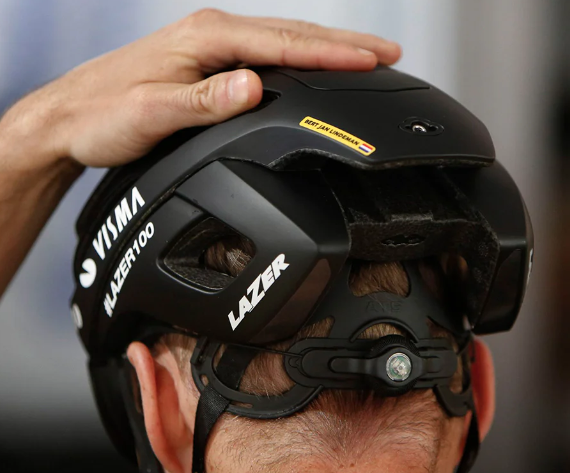
The retention system of a mountain bike helmet is a critical component that plays a significant role in ensuring a secure and comfortable fit. It's designed to keep the helmet securely on your head during your ride, providing stability and protection. Here's a comprehensive exploration of retention systems and their importance:
1. Purpose of the Retention System:
Head Stability: The primary function of the retention system is to hold the helmet securely in place on your head. It prevents the helmet from shifting, tilting, or coming off during sudden movements, ensuring that it provides continuous protection.
Customized Fit: The retention system allows you to customize the fit of the helmet to your head shape, ensuring a snug yet comfortable fit. This customization minimizes pressure points and ensures the helmet stays in place without feeling overly tight.
2. Types of Retention Systems:
Dial-Based Systems: Many modern helmets feature a dial-based retention system located at the back of the helmet. This system allows you to adjust the fit by turning a dial, which tightens or loosens an internal harness. It provides precise and convenient adjustments.
Ratchet Systems: Some helmets use a ratchet mechanism that allows you to fine-tune the fit incrementally. This type of system offers excellent adjustability and ensures a secure fit.
Fixed Straps: Older or simpler helmet designs may have fixed straps that are not adjustable. While these helmets can still provide a secure fit, they may not offer the same level of customization as dial or ratchet systems.
Magnetic Buckles: Some helmets come with magnetic buckles for easy and secure chin strap fastening. While not part of the retention system per se, they contribute to the overall comfort and ease of use.
3. Adjusting the Retention System:
Snug Fit: To ensure a proper fit, fasten the chin strap securely before adjusting the retention system. The helmet should sit level on your head and cover your forehead, with the front edge about one or two finger widths above your eyebrows.
Dial or Ratchet Adjustment: Use the dial or ratchet system to tighten or loosen the internal harness. Start with a snug but not overly tight fit and make small adjustments until you achieve a comfortable and secure fit.
Check for Movement: After adjusting, shake your head gently to ensure the helmet doesn't move. If it shifts or wobbles, further adjustments may be necessary.
4. Retention System Material and Padding:
- Comfort Padding: The retention system often includes padding or cushioning that comes into direct contact with your head. This padding should be comfortable, moisture-wicking, and breathable to enhance overall comfort.
5. Maintenance and Replacement:
- Regular Checkups: Periodically check the condition of the retention system and straps. Over time, they may wear out or lose their effectiveness. If you notice signs of wear or damage, it's essential to replace the helmet to maintain safety.
6. Safety and Retention Systems:
- Safety Standards: Helmets with retention systems must meet safety standards to ensure that the system is durable and effective in keeping the helmet securely in place during an impact.
In conclusion, the retention system of a mountain bike helmet is a vital component that ensures a secure and comfortable fit. It provides stability, prevents the helmet from shifting, and allows for customization to match your head shape. When choosing a helmet, pay close attention to the type of retention system it uses and ensure it provides a snug and secure fit to enhance both safety and comfort during your rides. Regular maintenance and replacement when necessary will help ensure the retention system continues to perform effectively.
Padding And Liner
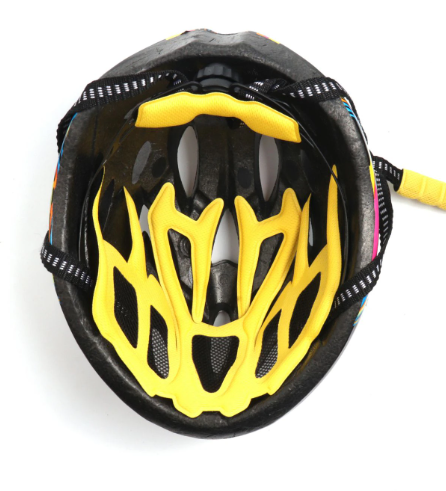
Padding and liner materials inside a mountain bike helmet play a crucial role in providing comfort, moisture management, and impact absorption. Here's a comprehensive exploration of the importance and features of helmet padding and liners:
1. Comfort:
Cushioning: Helmet padding provides a soft cushion against your head, reducing pressure points and enhancing overall comfort during long rides.
Even Distribution: It helps distribute the pressure evenly across your head, preventing discomfort in specific areas.
2. Moisture Management:
Moisture-Wicking: High-quality padding is typically made from moisture-wicking materials. These materials pull sweat away from your skin, helping to keep you dry and comfortable. This is especially important during hot or strenuous rides.
Anti-Bacterial Properties: Some helmet padding features anti-bacterial properties to reduce odor buildup caused by sweat and bacteria.
Hygiene: Moisture-wicking padding is also more hygienic because it helps prevent the growth of odor-causing bacteria.
3. Impact Absorption:
- Additional Protection: While the primary impact protection comes from the helmet's outer shell and inner liner (usually made of EPS foam), the padding can add an extra layer of cushioning and protection against low-speed impacts and minor bumps.
4. Customization:
- Adjustable Pads: Many helmets come with removable and adjustable padding, allowing you to fine-tune the fit and comfort of the helmet to your liking. You can move or replace pads to achieve a better fit for your head shape.
5. Liner Material:
EPS Foam: The inner liner of most helmets is made of expanded polystyrene (EPS) foam. This material is designed to crush and absorb energy upon impact, reducing the force transmitted to your head. Helmets with multi-density EPS foam often provide enhanced protection by varying foam density in different areas of the helmet.
MIPS Technology: In some helmets, the liner incorporates MIPS (Multi-directional Impact Protection System) technology. MIPS is a low-friction layer that allows the helmet to slide slightly upon impact, reducing rotational forces that can lead to brain injury in certain types of impacts.
6. Maintenance:
- Cleaning: Removable padding is easier to clean and maintain. You can typically hand wash these pads and allow them to air dry. Keeping your helmet clean and odor-free contributes to overall comfort.
7. Safety Standards:
- Impact Performance: Padding and liners are designed to work in tandem with the helmet's outer shell and inner liner to meet safety standards and provide effective protection in the event of a crash.
8. Replacement:
- Periodic Replacement: Over time, helmet padding may wear out or lose its effectiveness. If the padding becomes compressed, damaged, or begins to deteriorate, it's essential to replace it to maintain safety and comfort.
In summary, padding and liner materials inside a mountain bike helmet are integral to ensuring comfort, moisture management, and added protection. They cushion your head, distribute pressure, manage moisture, and provide an extra layer of impact absorption. Pay attention to the quality and adjustability of the padding when choosing a helmet, and remember to periodically inspect and replace it as needed to ensure your safety and comfort during your biking adventures.
Recommended: The Best Mountain Bike Helmets
Wrapping Things Up
In conclusion, choosing the right mountain bike helmet is not a decision to be taken lightly. It involves careful consideration of various factors, including safety features, helmet type, fit and comfort, weight, ventilation, retention systems, padding, and liner materials.
By making informed choices in these areas, you can ensure that your helmet provides optimal protection while keeping you comfortable during your rides.
Remember that safety should always be the top priority. Look for helmets that meet recognized safety standards and offer the appropriate level of protection for your riding style and terrain. Whether you opt for a half-shell helmet with excellent ventilation for cross-country adventures or a full-face helmet with added protection for downhill challenges, make sure it aligns with your specific needs.
The perfect mountain bike helmet strikes a balance between safety, comfort, and performance. It should fit securely, be properly adjusted using the retention system, and have padding that offers both cushioning and moisture-wicking capabilities.
Consider factors like weight and ventilation, which can enhance your overall riding experience, and prioritize helmet maintenance to ensure it continues to provide optimal protection.
Ultimately, your mountain bike helmet is your trusty companion on every trail, safeguarding your most valuable asset—your head. So, choose wisely, ride safely, and enjoy the thrilling adventures that await you with the peace of mind that comes from knowing you've made the right choice in headgear.
